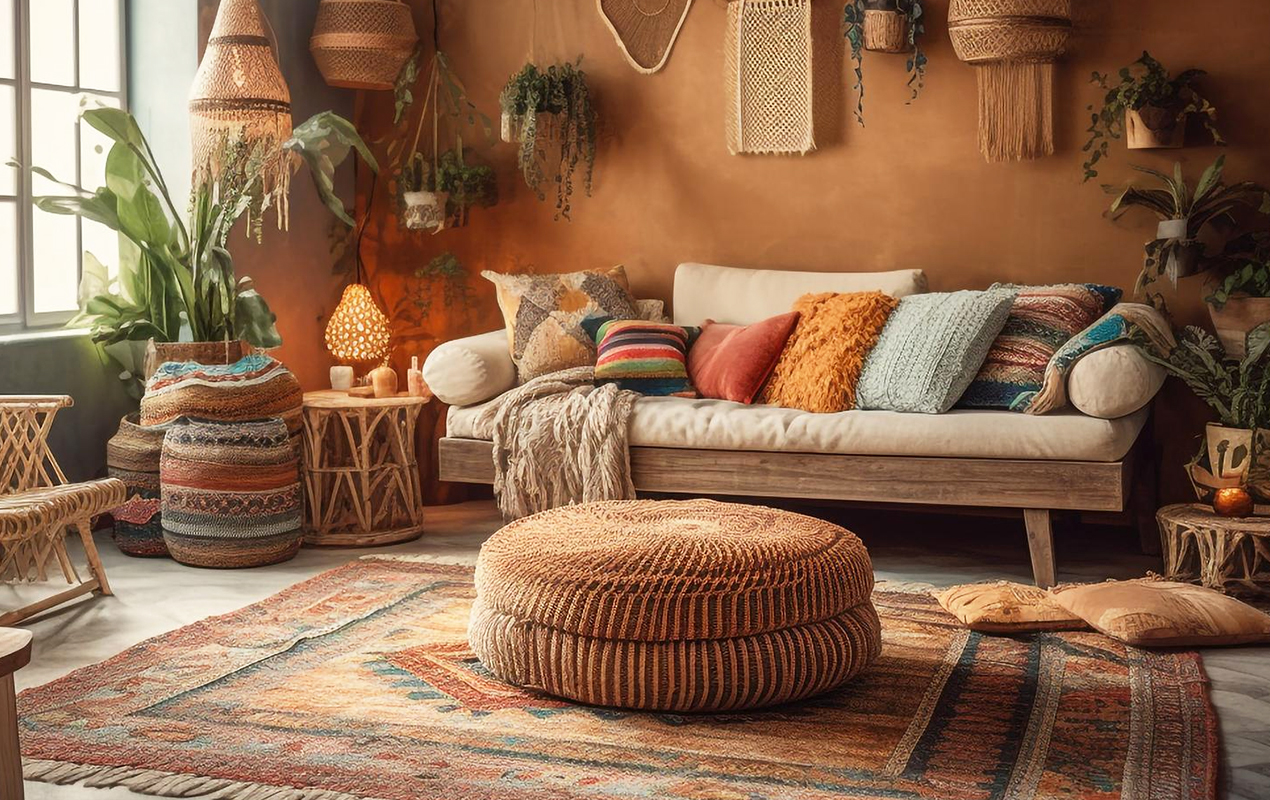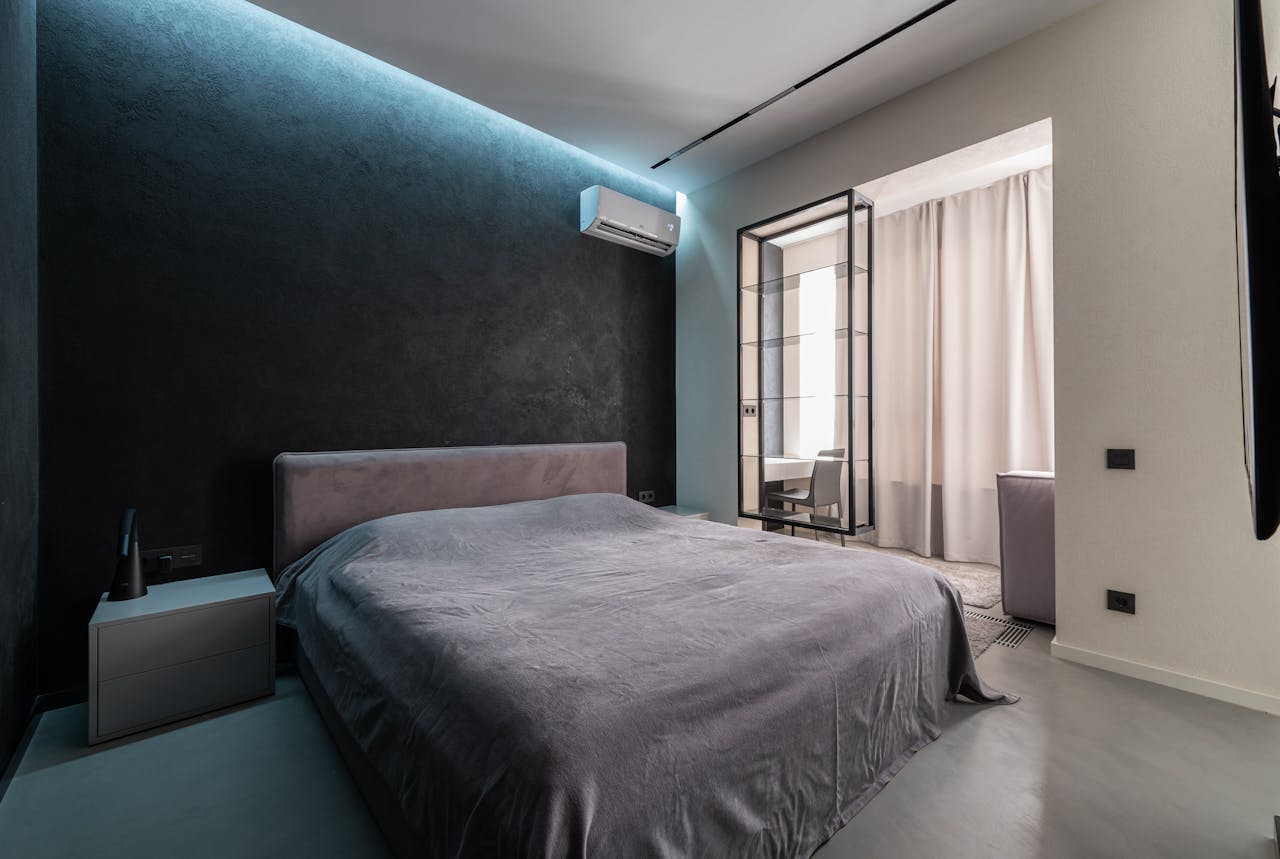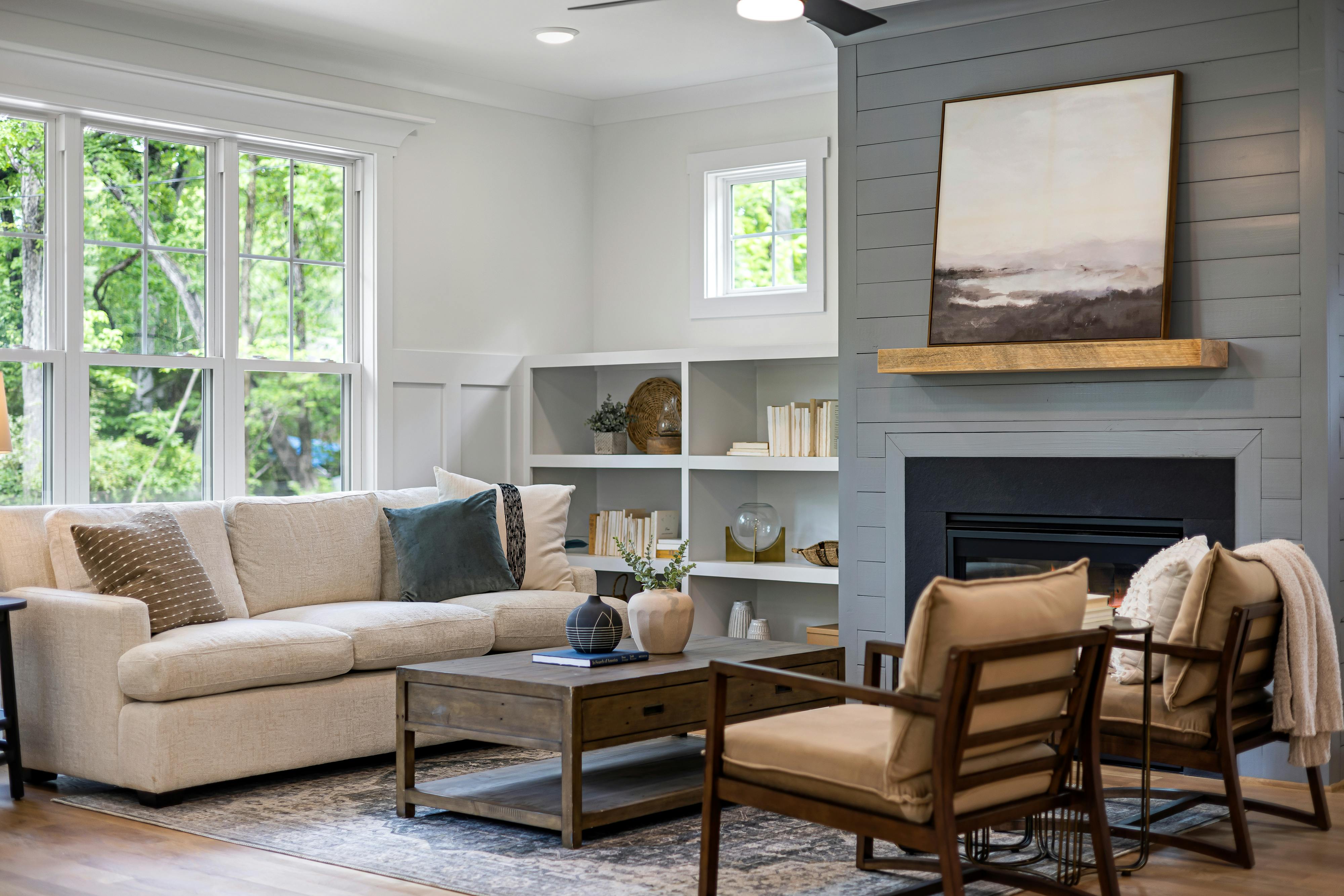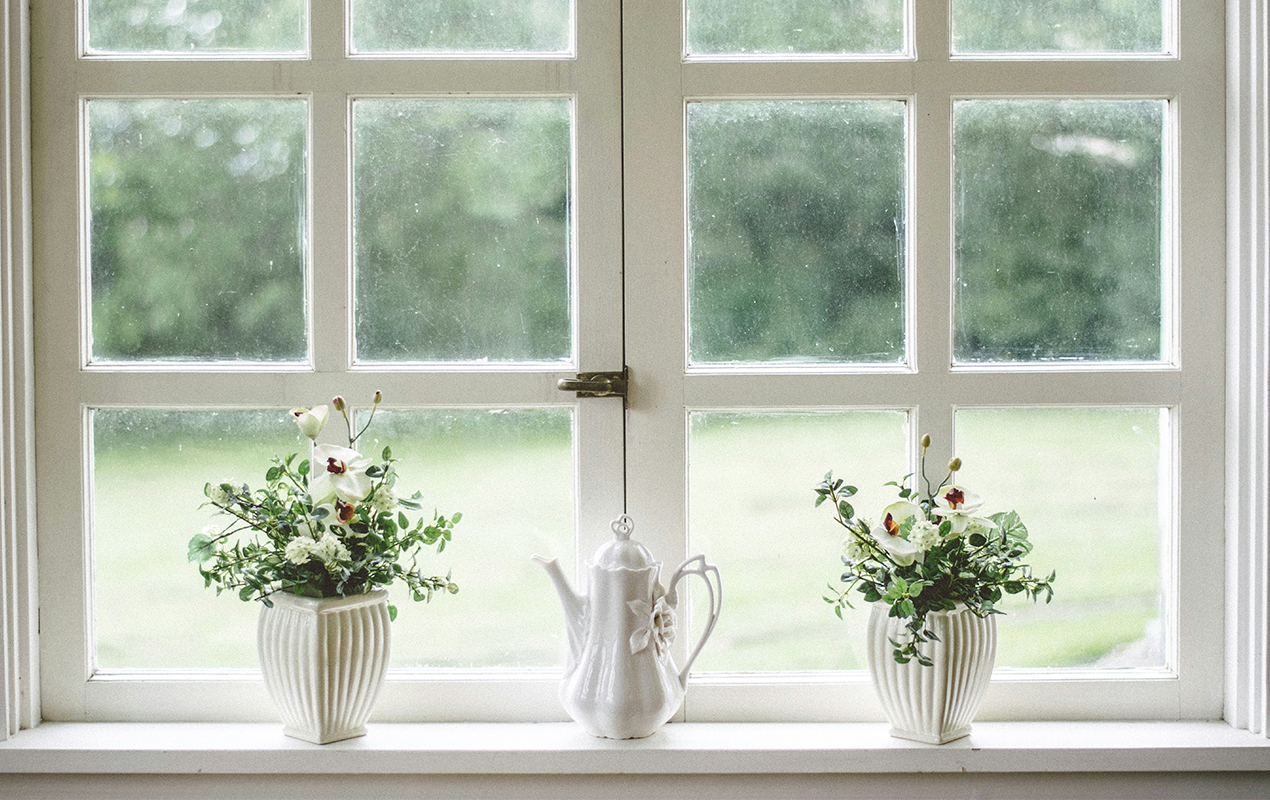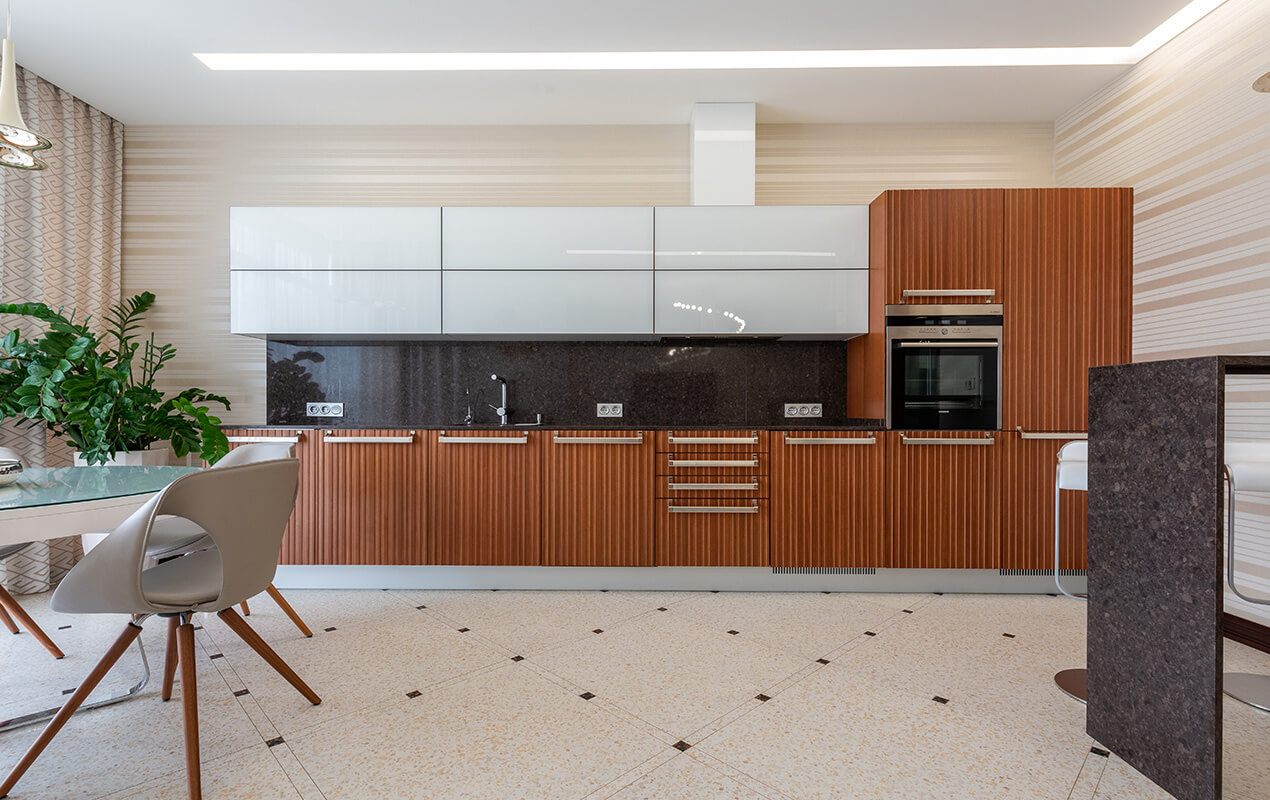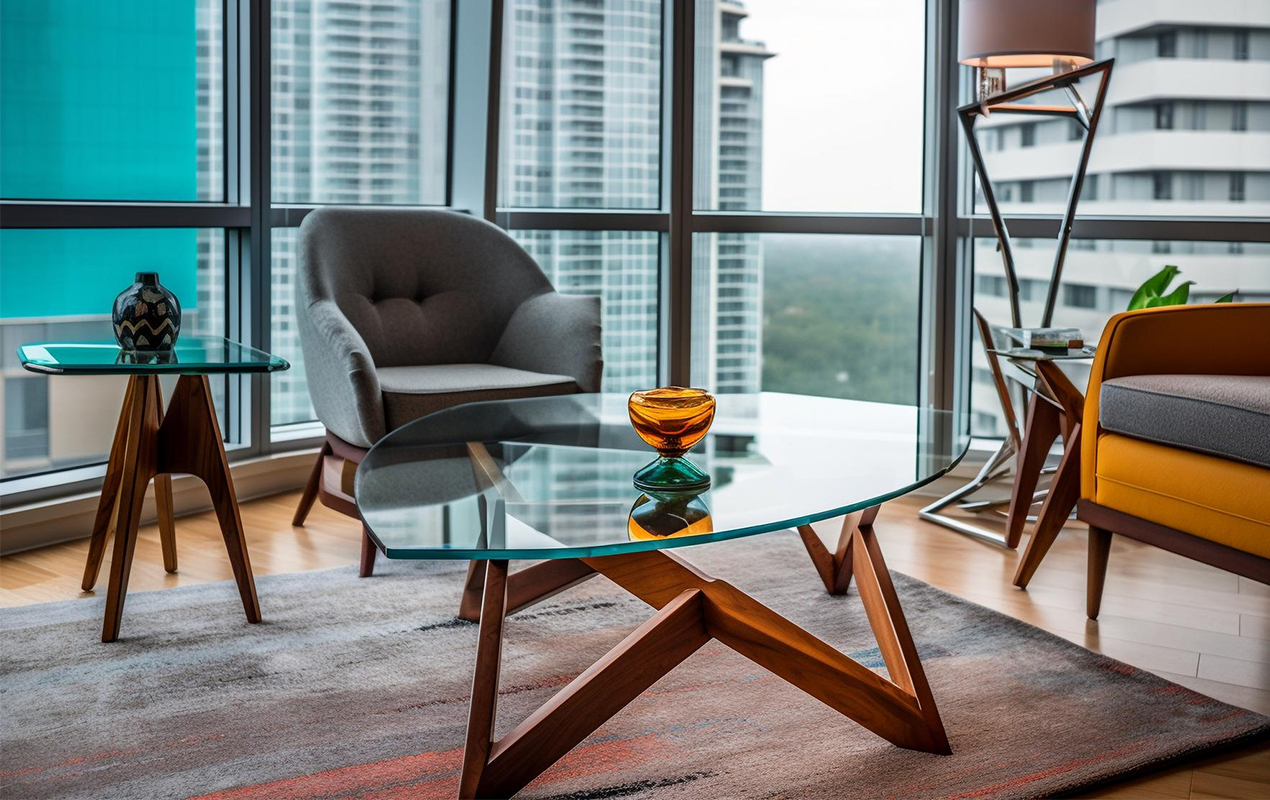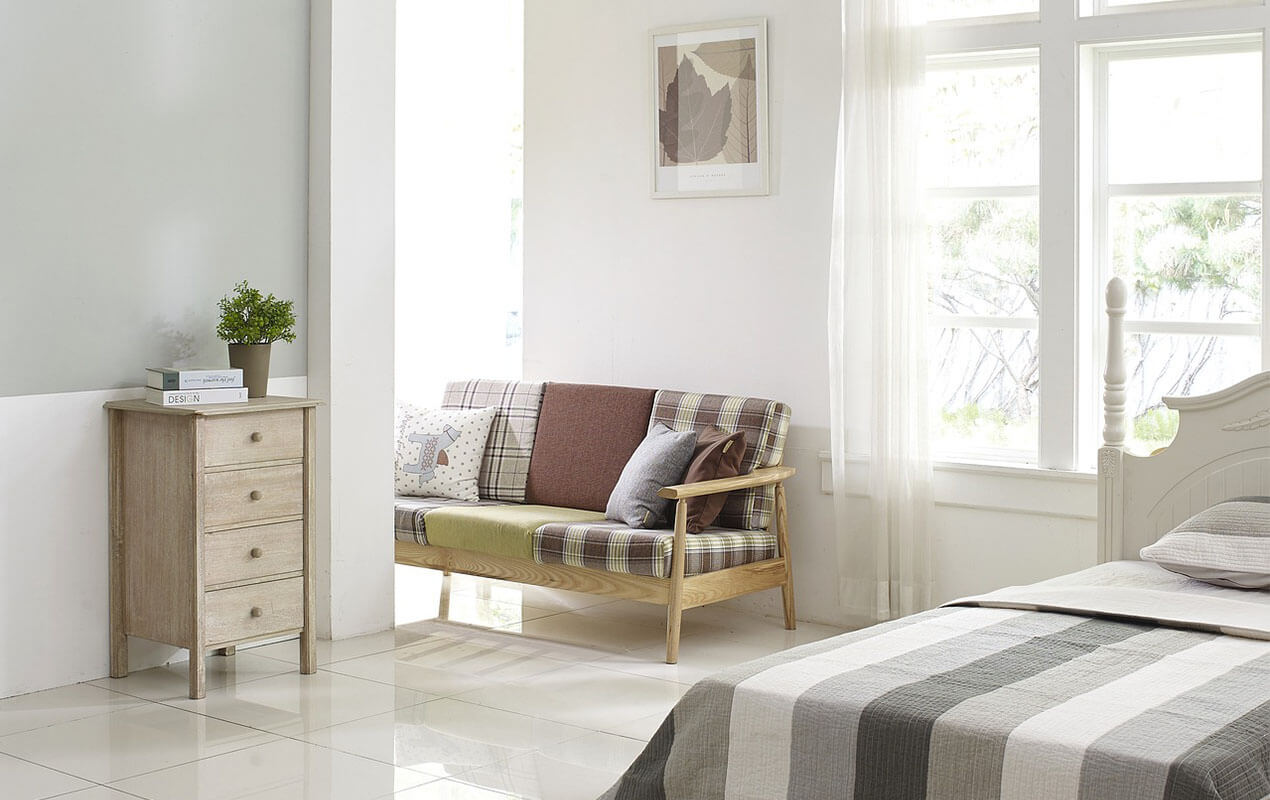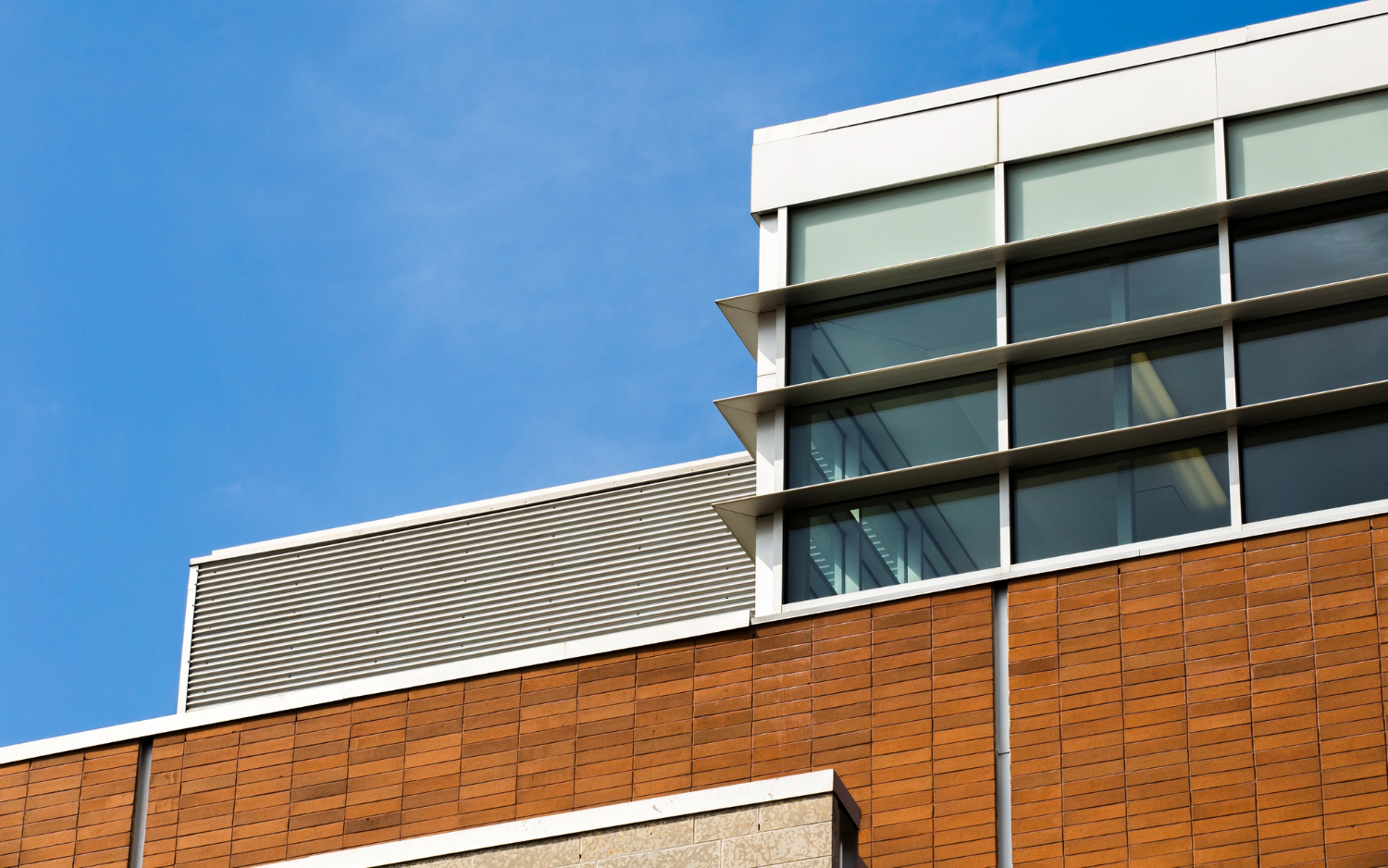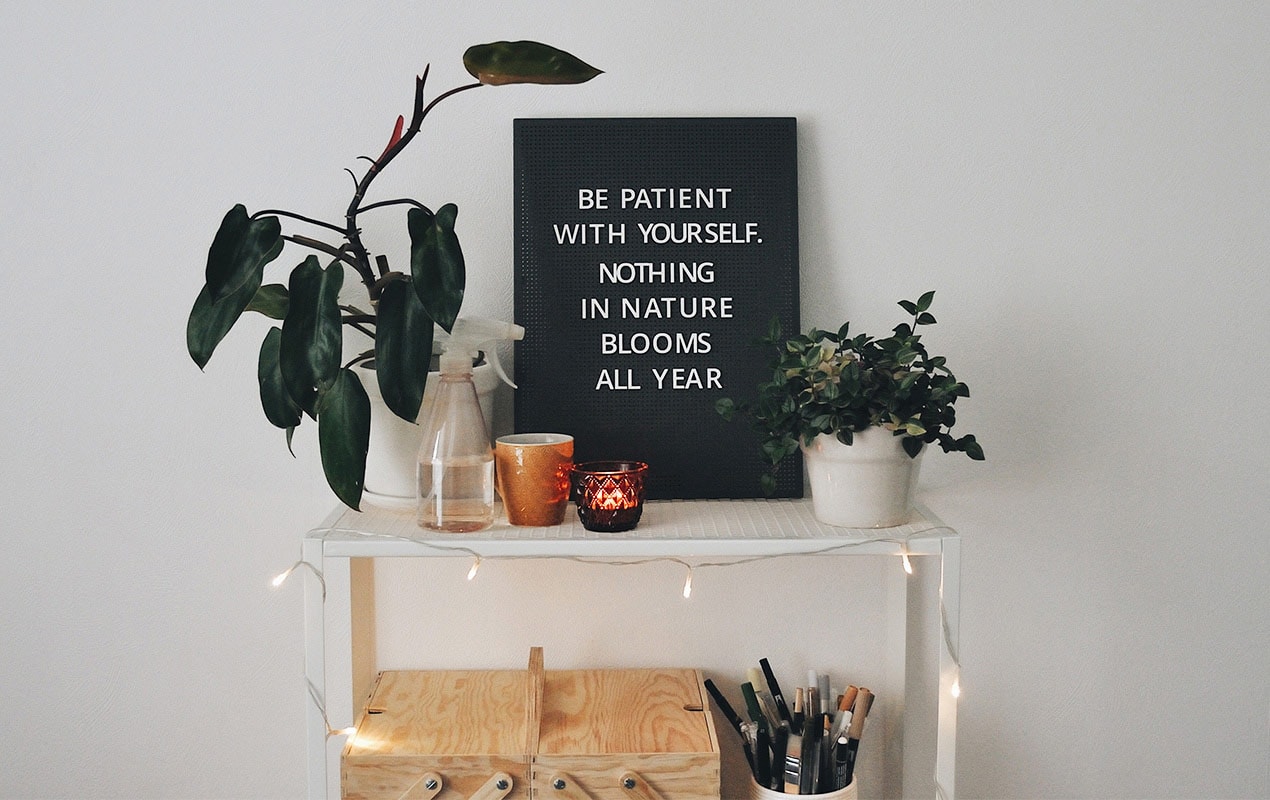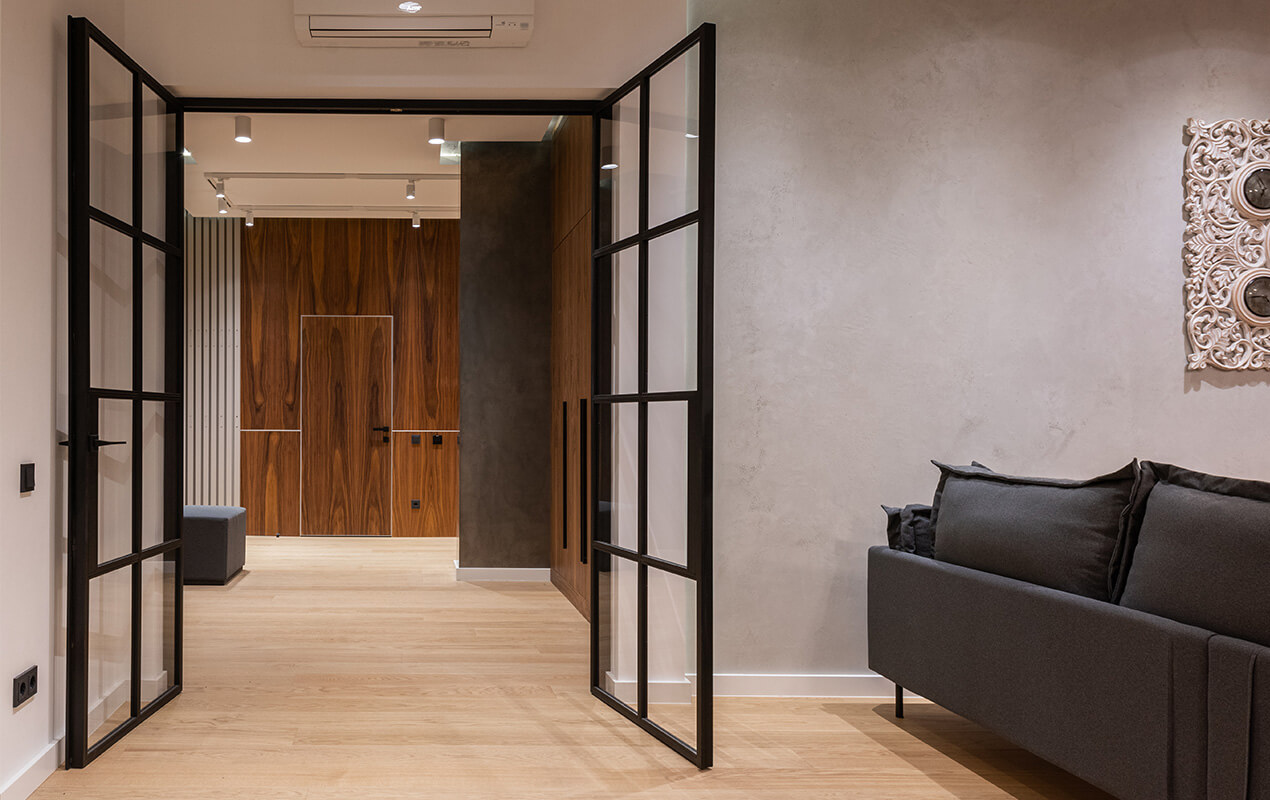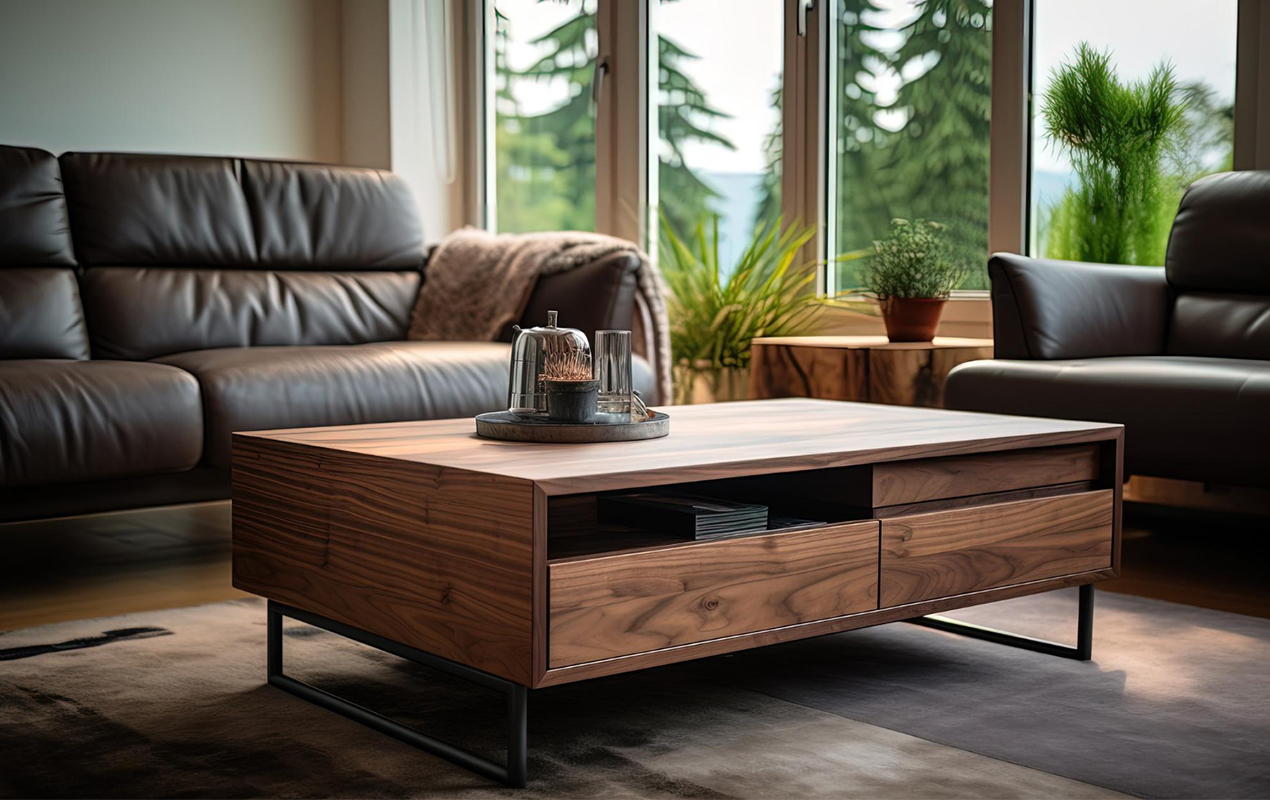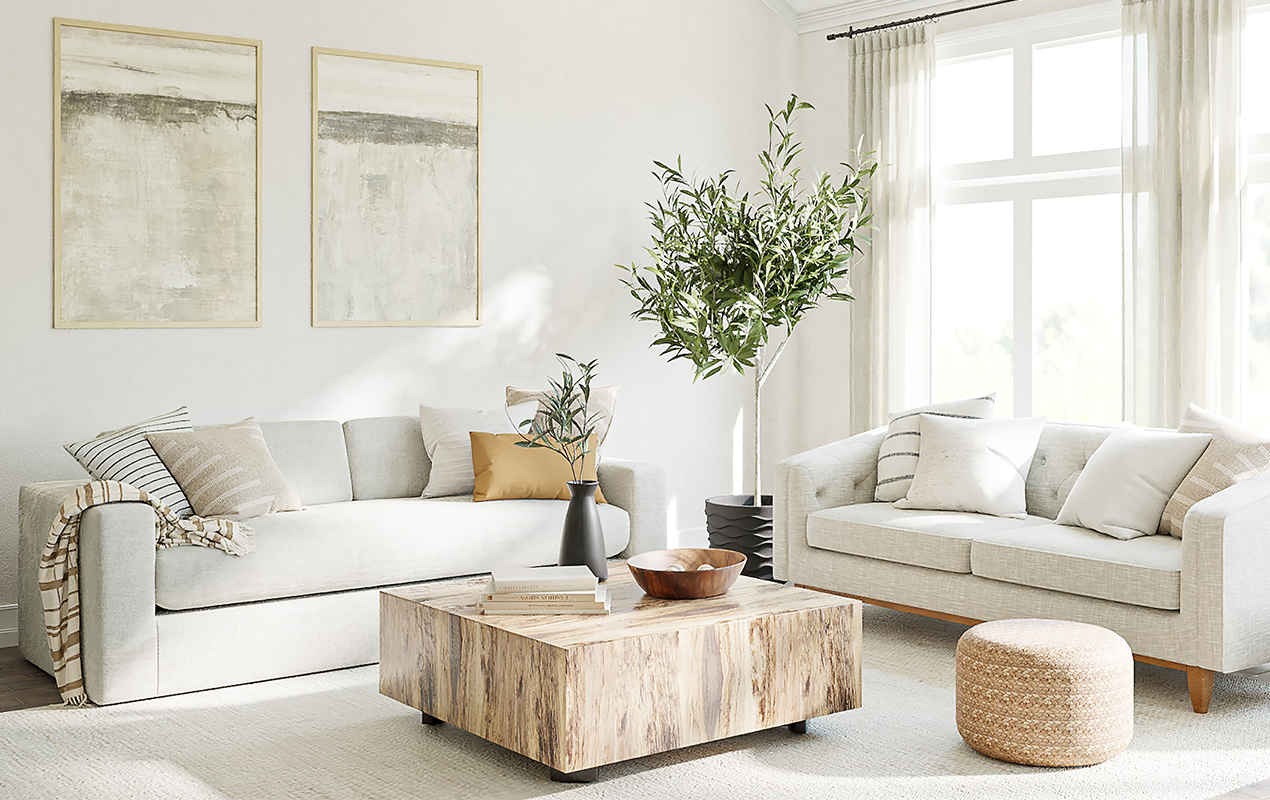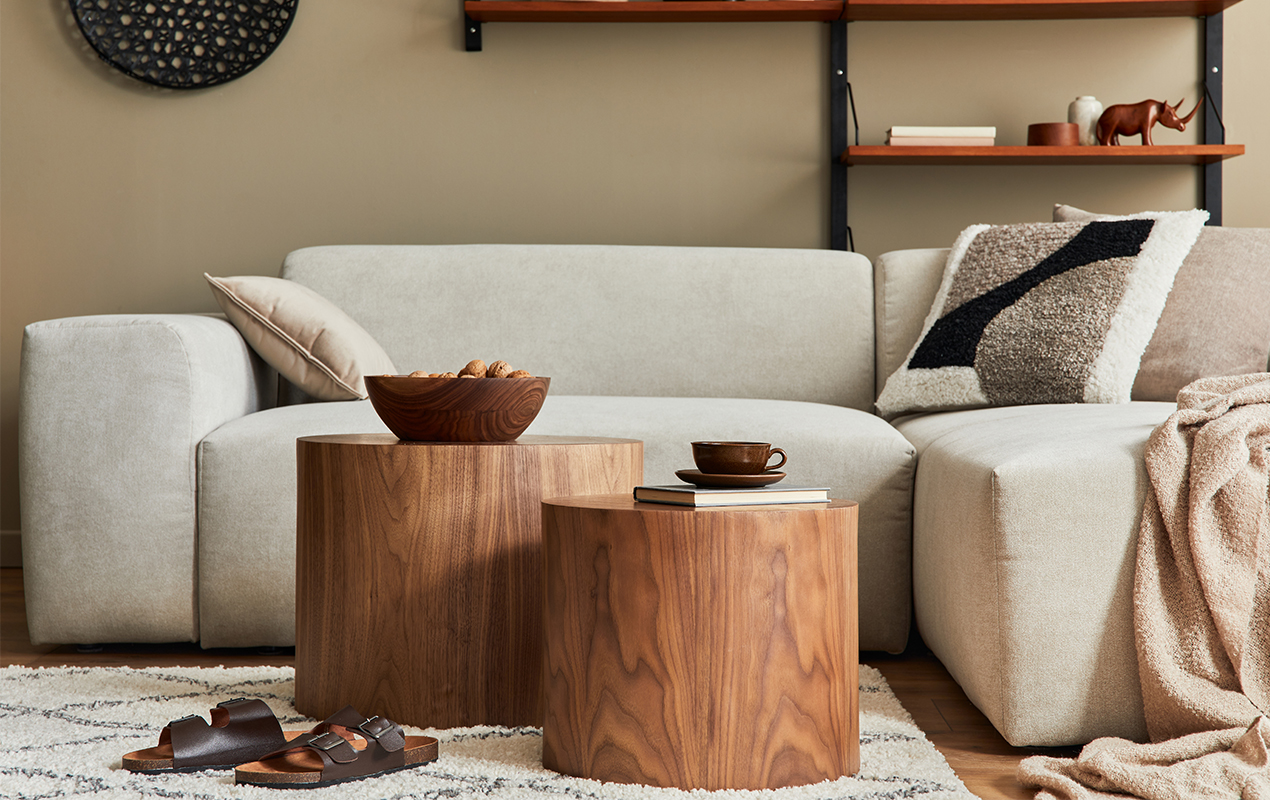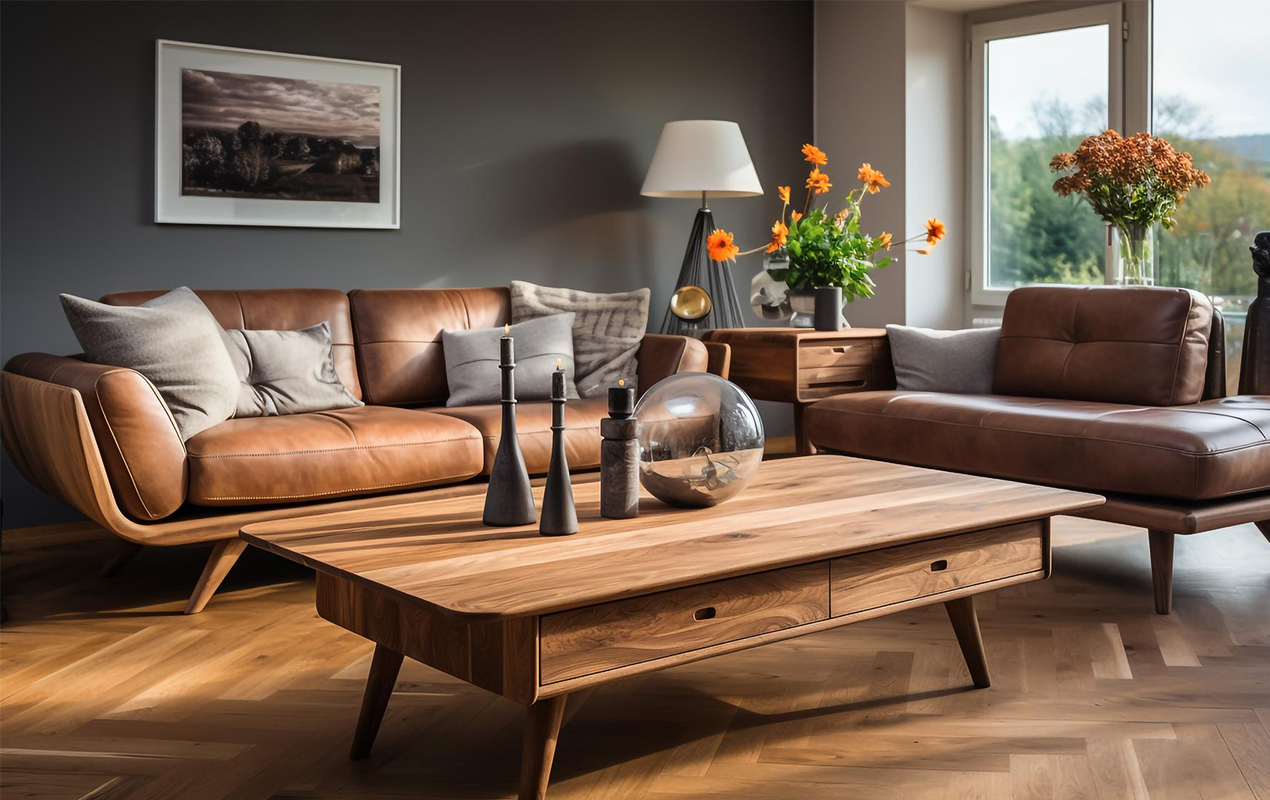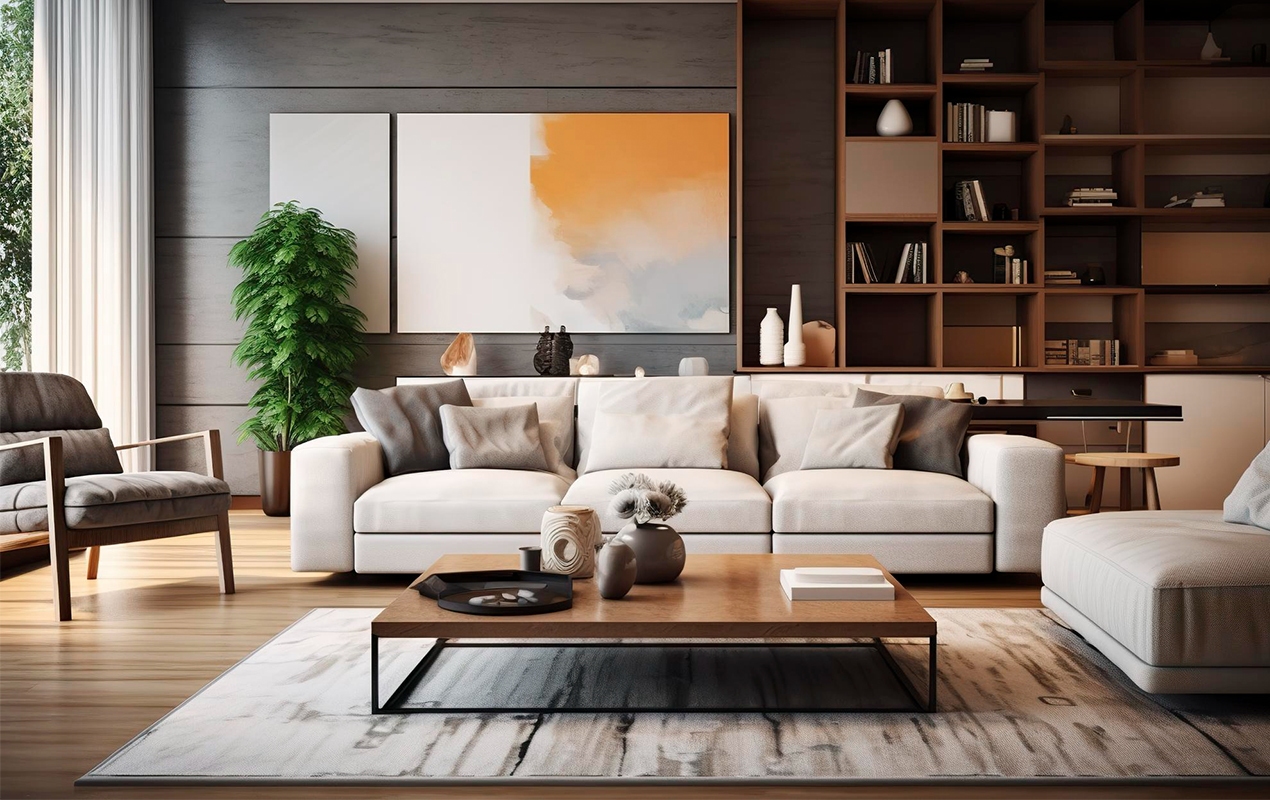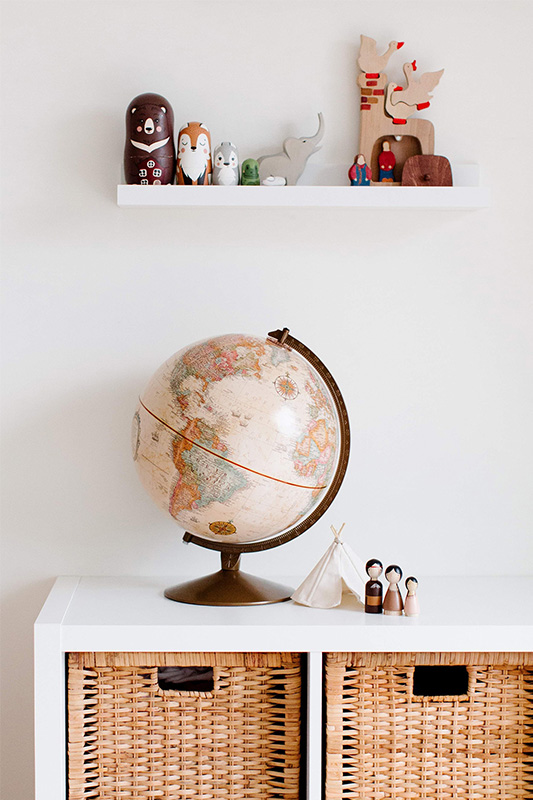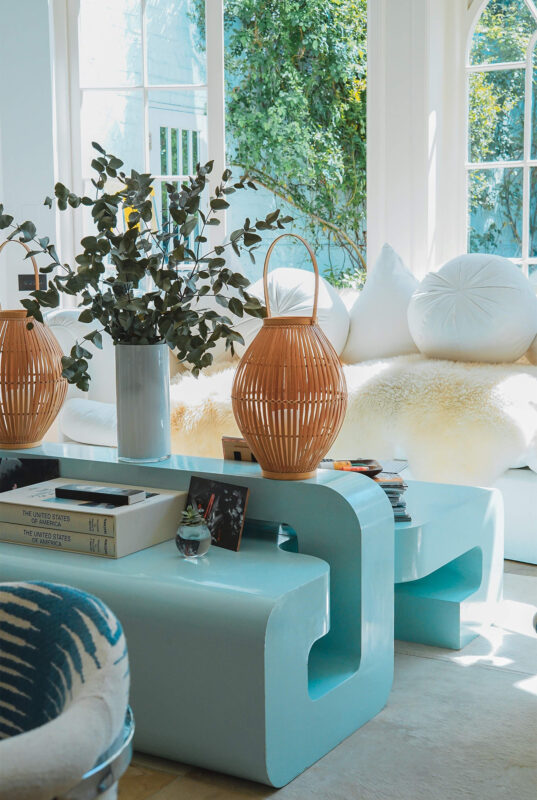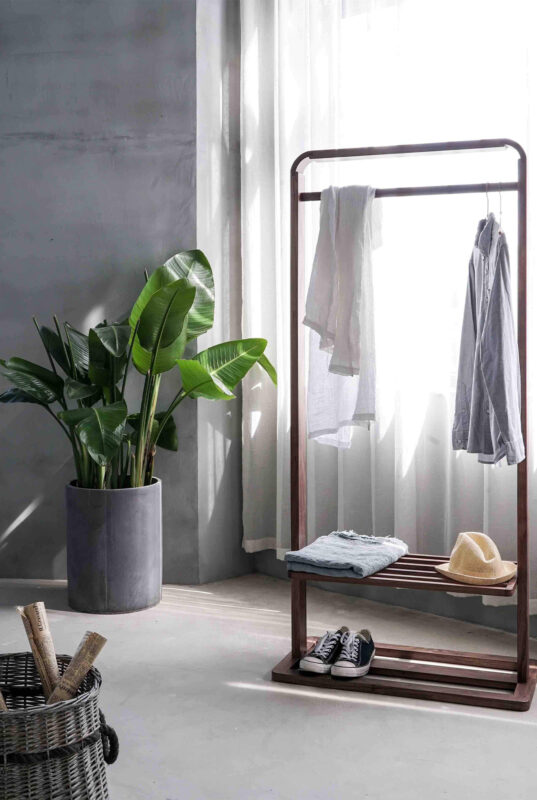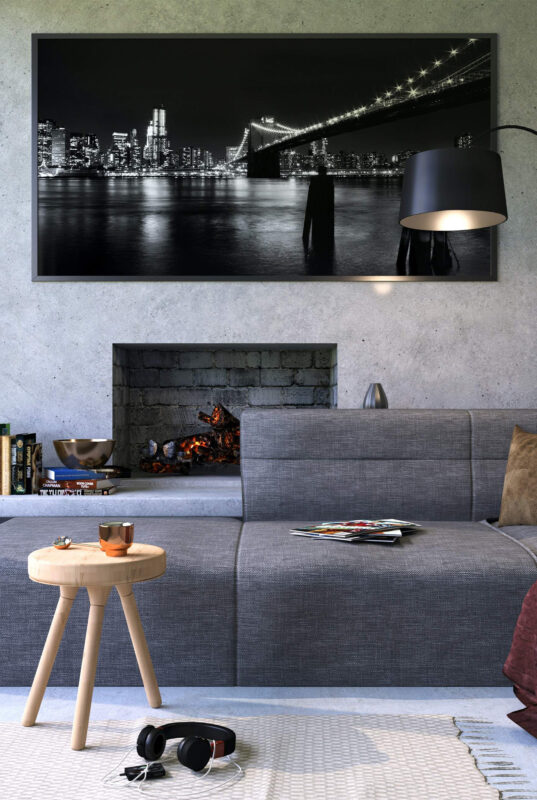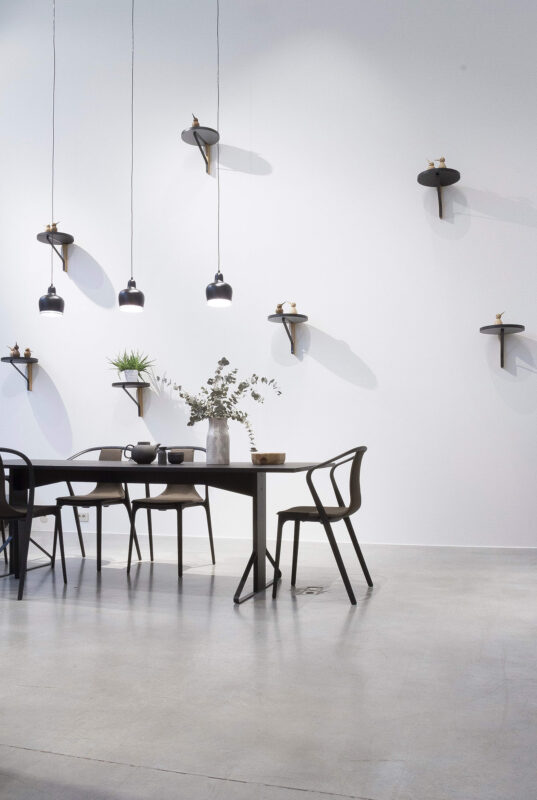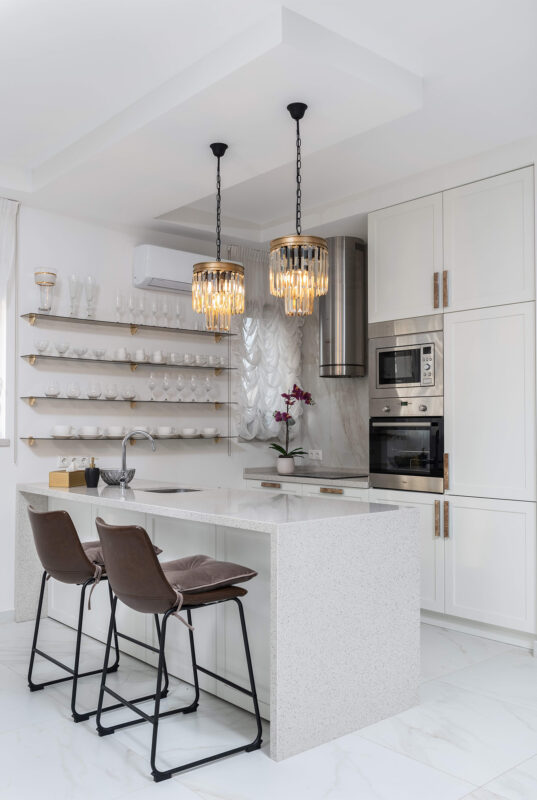Coffee Table Wood Types: Strengths and Weaknesses to Consider
BackExplore insights...Coffee Table Wood Types: Strengths and Weaknesses to Consider
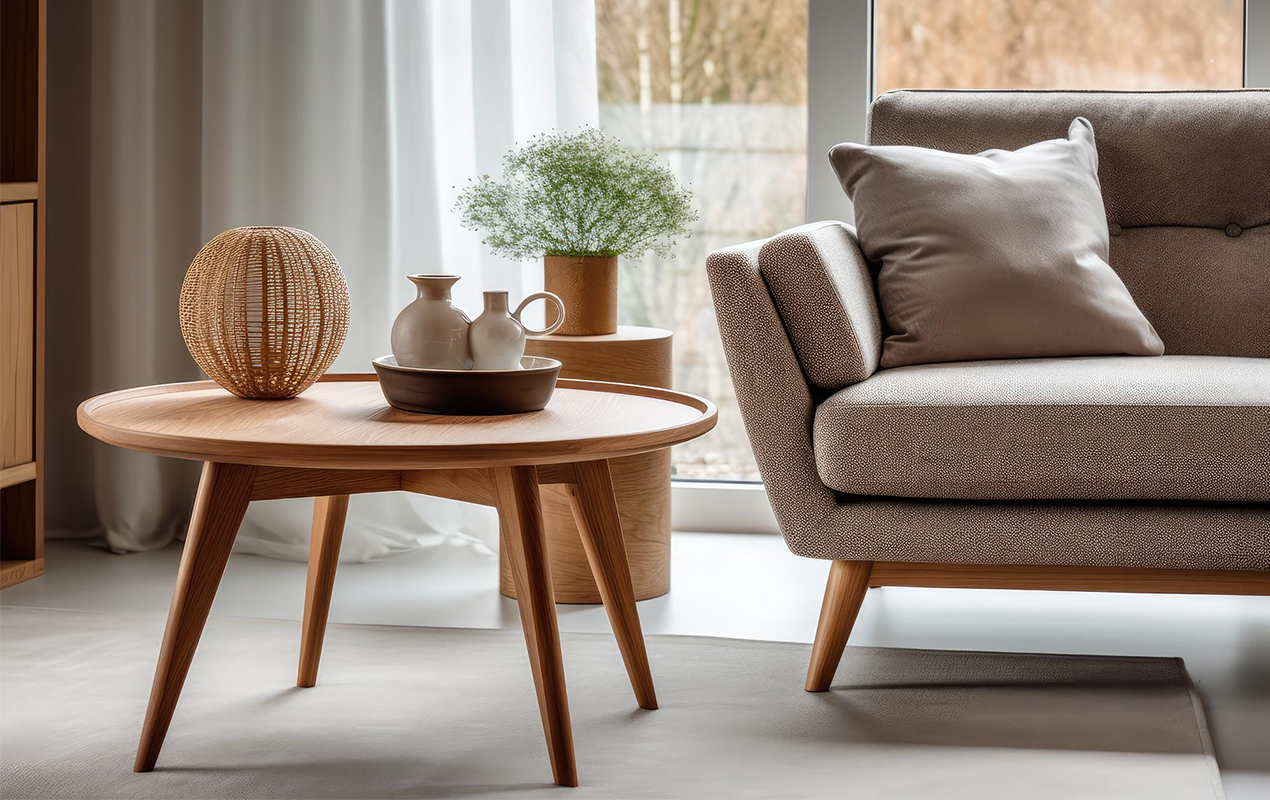
DISCLAIMER: The images in this post are for informational purposes to illustrate potential possibilities, recognizing that individual tastes vary. We aim to capture your wants and needs, expanding on each style where possible to offer a range of available options from reputable designers and affiliated brands. This selection process considers a variety of factors to ensure we cater to the diverse preferences of our readers.
Are you planning to buy or build a custom coffee table? If so, great! Hopefully we can lend a hand in deciding. Wooden tables have a distinctive appeal and a natural warmth that can instantly exalt the look of your living room. However, with so many wood types available, deciding on what to use for your coffee table can be confusing. Are you looking for something durable or decorative, rustic or refined? Don’t worry; we’ve got you covered.
In this guide, we’ll steer you through the pros and cons of six popular wood types for coffee tables. By the end, you’ll be able to pick the one that suits your lifestyle and budget. Whether you have kids or pets or want a centerpiece for your living room, there’s a wood that will meet your needs. Let’s get started and find your ideal coffee table wood match.
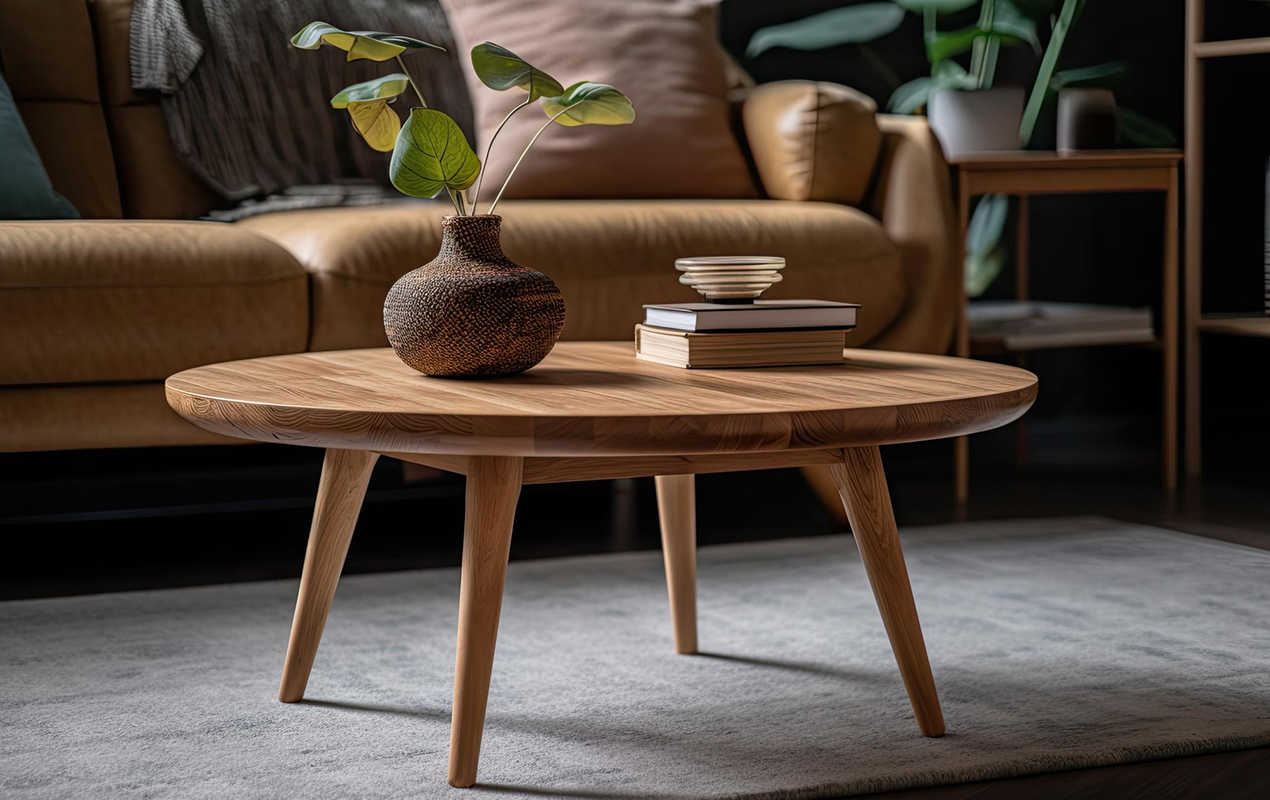
Photo by Vusal3d from Freepik
Insight – Choosing a sustainable source of wood is crucial. The best way to ensure responsible forestry practices is by opting for woods certified by the Forest Stewardship Council.
Hardwood vs. Softwood: Understanding the Key Differences
Hardwoods like oak, maple, and walnut are durable and long-lasting—excellent for coffee tables that will see a lot of use. Softwoods such as pine, cedar, and redwood are more affordable and work well for rustic or outdoor styles, but they dent and scratch more easily.
Hardwood Strength and Allure
Hardwoods have tight wood grains that make them resistant to scratches, dents, and stains. Oak is a popular, durable choice that can handle extensive daily use. Maple has a tight, uniform grain and creamy color that gives tables a sleek, modern look. Hardwoods like teak and mahogany are naturally resistant to water damage and weathering. They are ideal if your table will be in a high-humidity area or outdoors.
For More Info: 22 Teak Coffee Table Ideas for an Eco-Friendly and Elegant Interior
While more expensive, hardwood tables are built to last a lifetime and beyond. Their dense, robust nature means they can handle the demands of a busy family room without showing much wear and tear. The natural grains and textures also provide visual depth and warmth.
Softwood: Affordable but Prone to Damage
Softwoods such as pine, cedar, and redwood are indeed more affordable than hardwoods. However, they are also more prone to dents and scratches, which can make them less durable in the long run. Knots and uneven wood grains are also common in softwood, making it quite challenging to finish smoothly. While softwoods may work for rustic or distressed styles, they do require more maintenance to prevent stains and water damage.
Softwood tables are a good alternative if you’re on a budget, want an outdoor or weather-resistant table, or prefer a rustic, natural wood look. However, be prepared for dents, scratches, and the need to refinish the surface more often. With regular use, softwood coffee tables may show wear and tear sooner than expected.
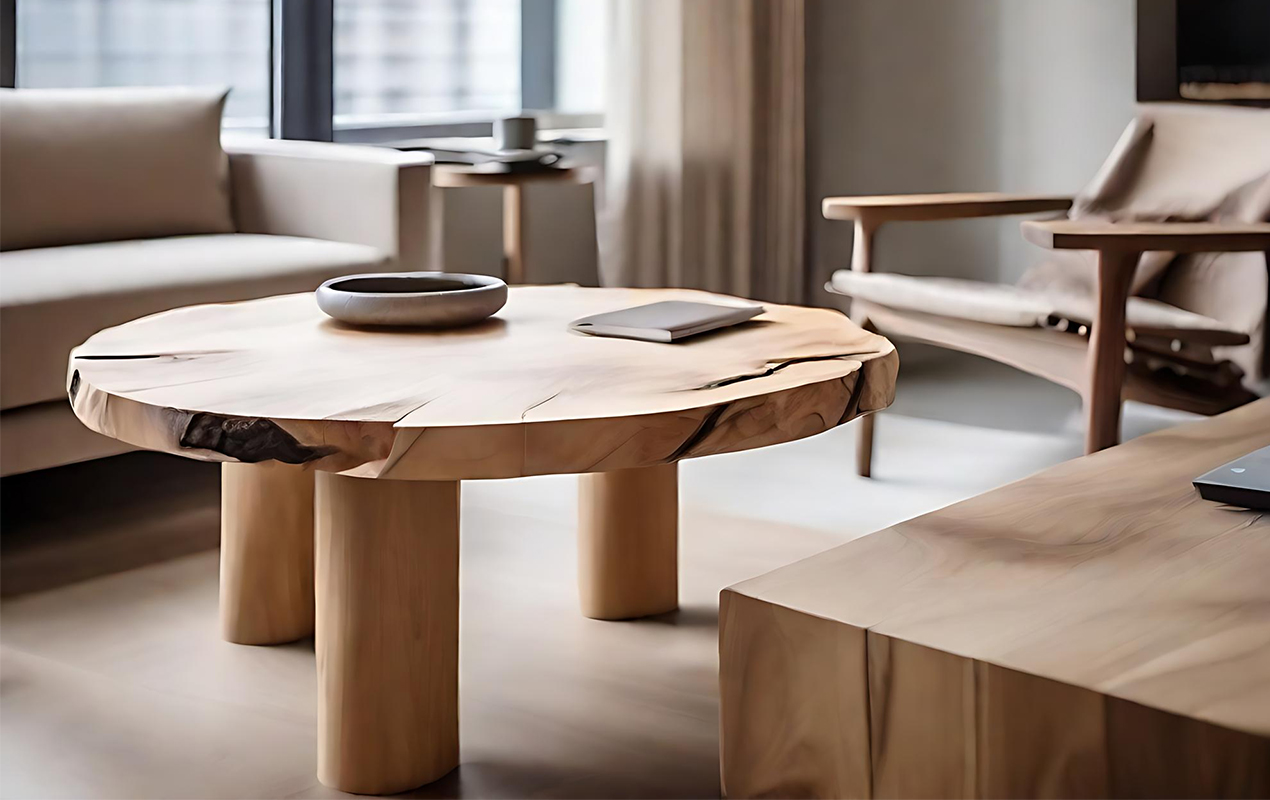
Photo by Abulkalamazad8350 from Freepik
Insight – Rustic or smooth? Textured, rustic woods like reclaimed barn wood or acacia offer an organic, casual look, while smoothly sanded wood provides a sleeker aesthetic.
Popular Hardwoods for Coffee Tables (Oak, Maple, Mahogany)
Three of the most popular hardwoods for coffee tables are oak, maple, and mahogany. Each has its strengths and weaknesses to consider before you buy.
Oak
Oak wood is a highly durable, aesthetically pleasing, and budget-friendly option for flooring, furniture, and other household items. The wood has a remarkable grain pattern and a warm, golden color that lends a rustic feel to any space. While oak can withstand scratches and stains quite well, it may be more susceptible to dents than other hardwoods. However, this characteristic does not take away from its versatility, longevity, and suitability for households with kids or pets.
Read More: 20 White Oak Coffee Table Ideas for Ravishing Rustic Refinement
Maple
Maple wood is an excellent choice for those looking for a clean and minimalist look. It carries a uniform grain pattern and pale color that provides a sleek appearance to a minimalistic space. Maple is an exceptionally dense and durable wood that can withstand frequent use. However, it requires regular maintenance to prevent water spots and stains. Despite being on the higher end of the budget spectrum, maple can last a lifetime with proper care. If you want to create a contemporary space, maple wood is a top contender.
Gain Insight: 20 Maple Coffee Table Ideas For A Woodworker’s Dream Design
Mahogany
Mahogany wood is known for its rich, lustrous color and distinctive grain pattern, giving it an aura of warmth and elegance. It’s a stable and durable wood, making it resistant to warping and cracking, and it polishes to a high sheen. However, mahogany tends to scratch more easily than maple or oak and requires frequent conditioning to maintain its finish. Because of its quality, mahogany is relatively expensive and may not be suitable for those on a budget.
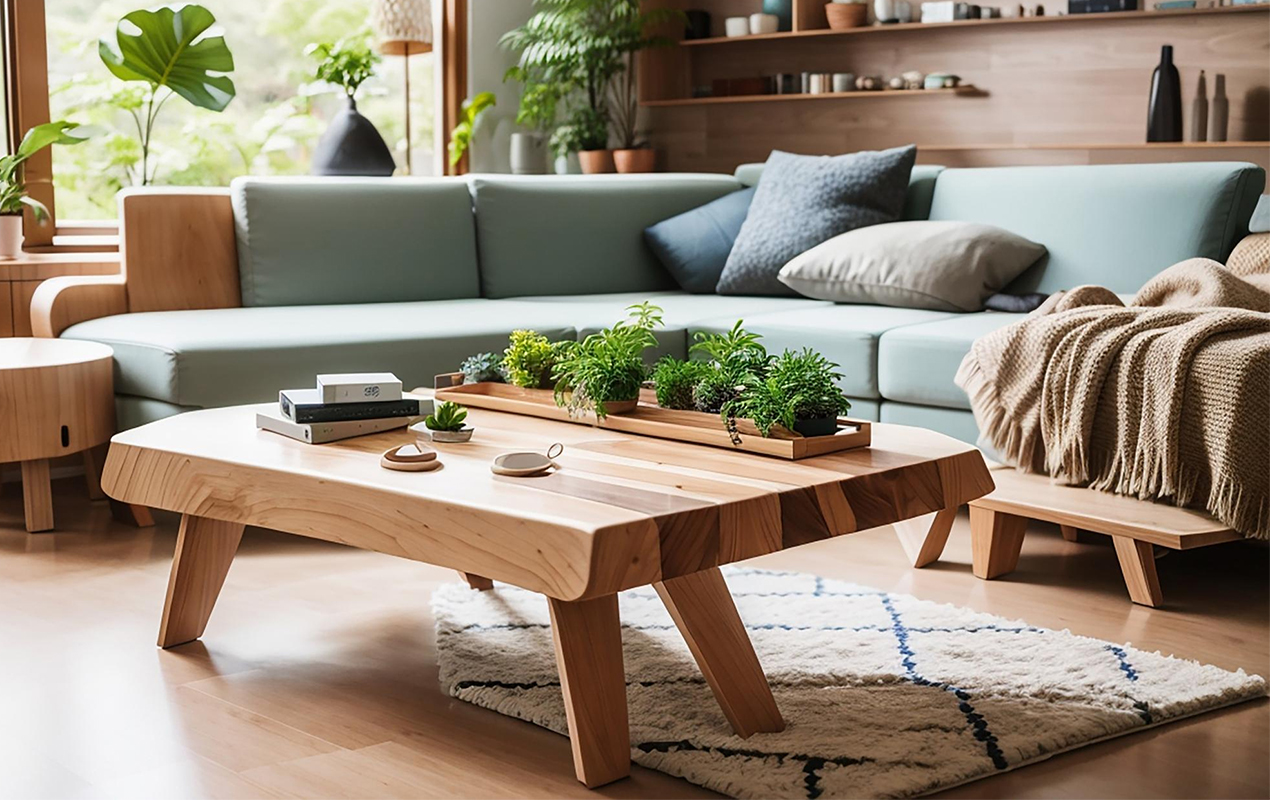
Photo by Dayalguru from Freepik
Choosing the Right Softwood (Pine vs. Cedar vs. Redwood)
Pine, cedar, and redwood are popular, affordable prospects when choosing softwood for your coffee table. Each has strengths and weaknesses to consider based on your needs and style preferences.
Pine
Pinewood is a popular softwood choice, widely used due to its affordability, lightweight feel, and ease of working. It has a casual and rustic appearance with visible knots and grain patterns that add character. Nevertheless, since it is a softwood, it is prone to blemishes and marks and may show signs of wear over time.
Related Article: Create a Warm Welcome With 24 Pine Coffee Table Design Styles
Pine can also warp or crack if not properly sealed. Despite these drawbacks, the wood’s softness makes it ideal for intricate carving and creative distressing techniques. Pine has a distinct reddish tint and a pleasant resinous scent that adds to its appeal. It is a great option for rustic farmhouse or cabin-style decor.
Cedar
Cedarwood is known for its pleasant scent, insect-repellent properties, and natural resistance to rot and decay. Its reddish hue and tight grain pattern give it a distinctive look. While cedar is harder than pine, it is still relatively soft and can be prone to scrapes and indents. To maintain its appearance, cedar requires regular sealing to prevent staining. If you desire a coffee table that can endure outdoor use or humidity, cedar is an excellent choice due to its natural oils, which act as a preservative.
Redwood
Redwood is a highly durable and weather-resistant material famous for its deep reddish color and straight grain. It naturally repels insects, rot, and warping, making it an ideal choice for outdoor furniture. With little maintenance, redwood can withstand extreme weather conditions. Yet, it is more expensive and harder to find compared to other materials. When used for a coffee table, redwood adds a touch of luxury and rusticity that is ideal for traditional setups or mid-century modern homes.
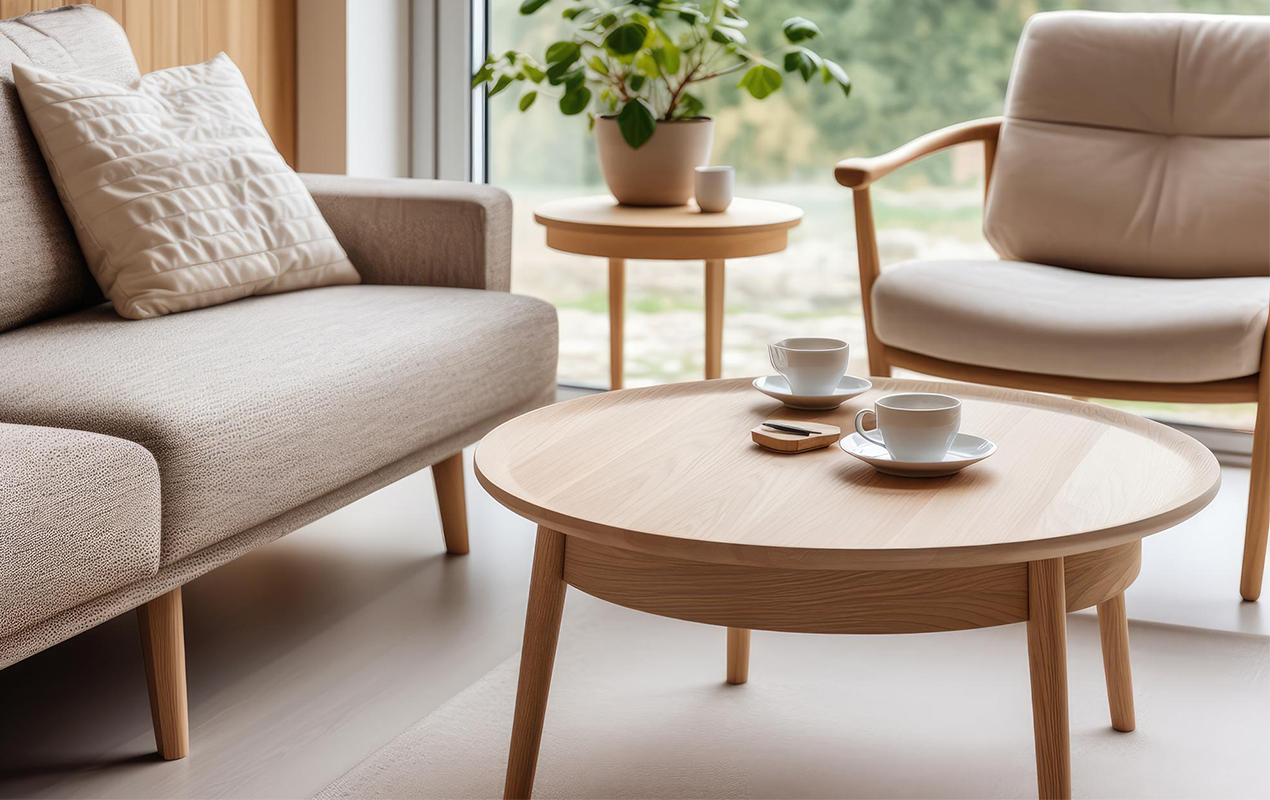
Photo by Julienprotz from Freepik
Insight – When finishing wood, you can choose between oil or lacquer-based finishes. Oil finishes showcase the wood’s natural grain and are easy to maintain. Lacquer finishes, on the other hand, create a durable and sealed surface.
Veneers, Laminates, and Other Wood Alternatives
Veneers, laminates, and other wood alternatives are prevalent for coffee tables. They provide the look of solid wood at a lower cost and often with additional benefits like durability and stain resistance.
Veneers
Veneers are a widespread pick for furniture due to their cost-effectiveness and authentic wood grain impression. They consist of a thin layer of real wood glued onto a core material such as plywood or medium-density fiberboard (MDF). Although veneers provide a natural finish, they tend to be more susceptible to damage than solid wood due to their thinness.
Scrapes, indentations, and water can all penetrate the veneer layer. However, with advancements in modern veneers and glues, durability has significantly improved. Common types of veneers used for coffee tables include oak, walnut, and teak.
Laminates
Laminates such as Formica consist of several layers of paper and resin that are fused together under high heat and pressure. These layers make for an affordable and durable surface that can resist stains, gashes, and water damage. Additionally, laminates can accurately mimic the appearance of natural materials like stone and wood for coffee tables.
However, they may lack the depth and authenticity that real wood can provide. Laminate tables may appear unnatural when viewed closely, but they are an excellent choice for areas with high traffic and low maintenance requirements.
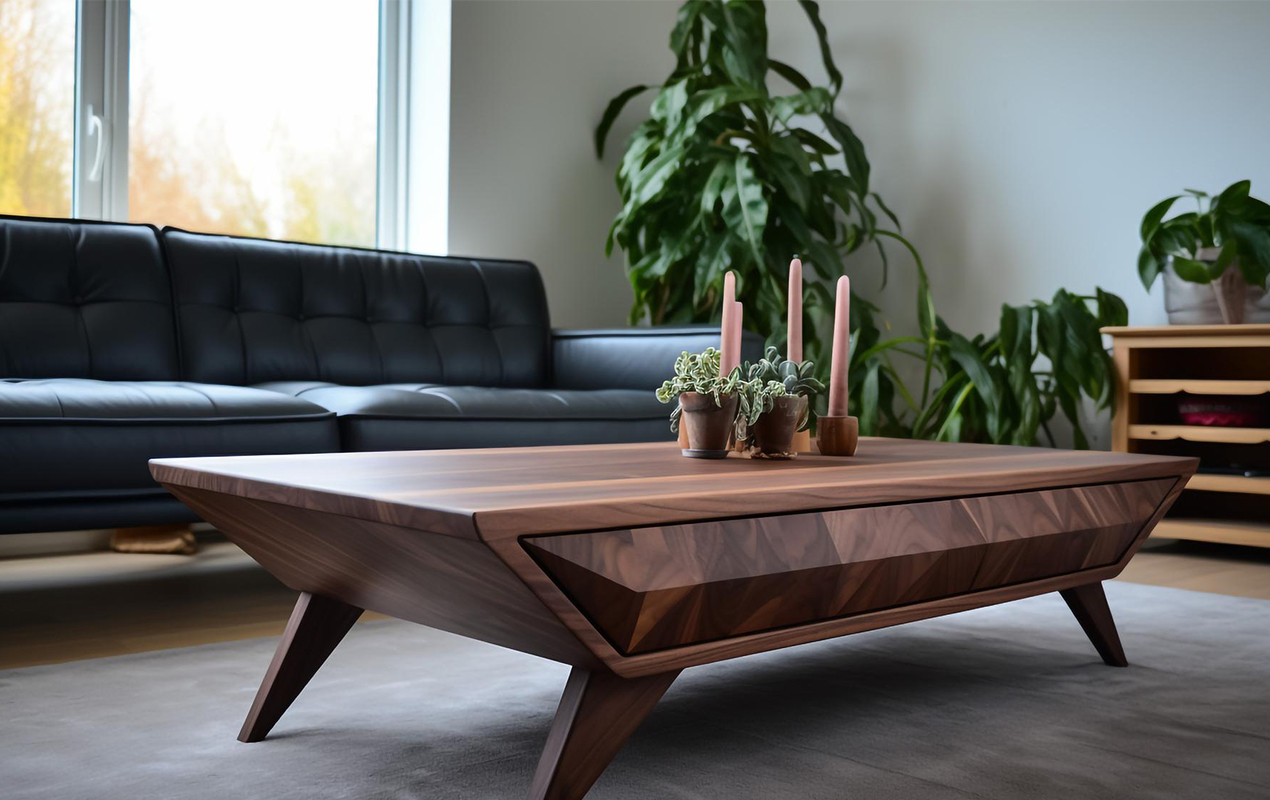
Photo by IamMujahidMalik from Freepik
Painted or Stained
One way to personalize the color and finish of your furniture is to paint, stain, or distress solid wood or wood composites like plywood or MDF. This can provide a rustic, weathered patina with chalk paint, milk paint, or stains or a modern look with bold colors. Keep in mind that paint and stains require more maintenance to retain their fresh appearance. Heavy use may cause them to chip or fade over time.
Related Article: Sand, Stain, Seal: A Guide On How to Refinish A Coffee Table
Other Materials
Coffee tables are available in diverse materials such as wood, glass, metal, and stone. Glass tabletops offer a modern and upscale look, but they need to be cleaned frequently and are more fragile than other materials. Metals such as steel or copper and natural stones like marble or slate add texture to coffee tables and are less susceptible to dents, scratches, and stains than wood. An eco-friendly option is composite materials that blend organic and synthetic materials; these are becoming increasingly prevalent due to their look and sustainable features.
Discover More: Elevate Your Living Room with 24 Glass Coffee Table Designs
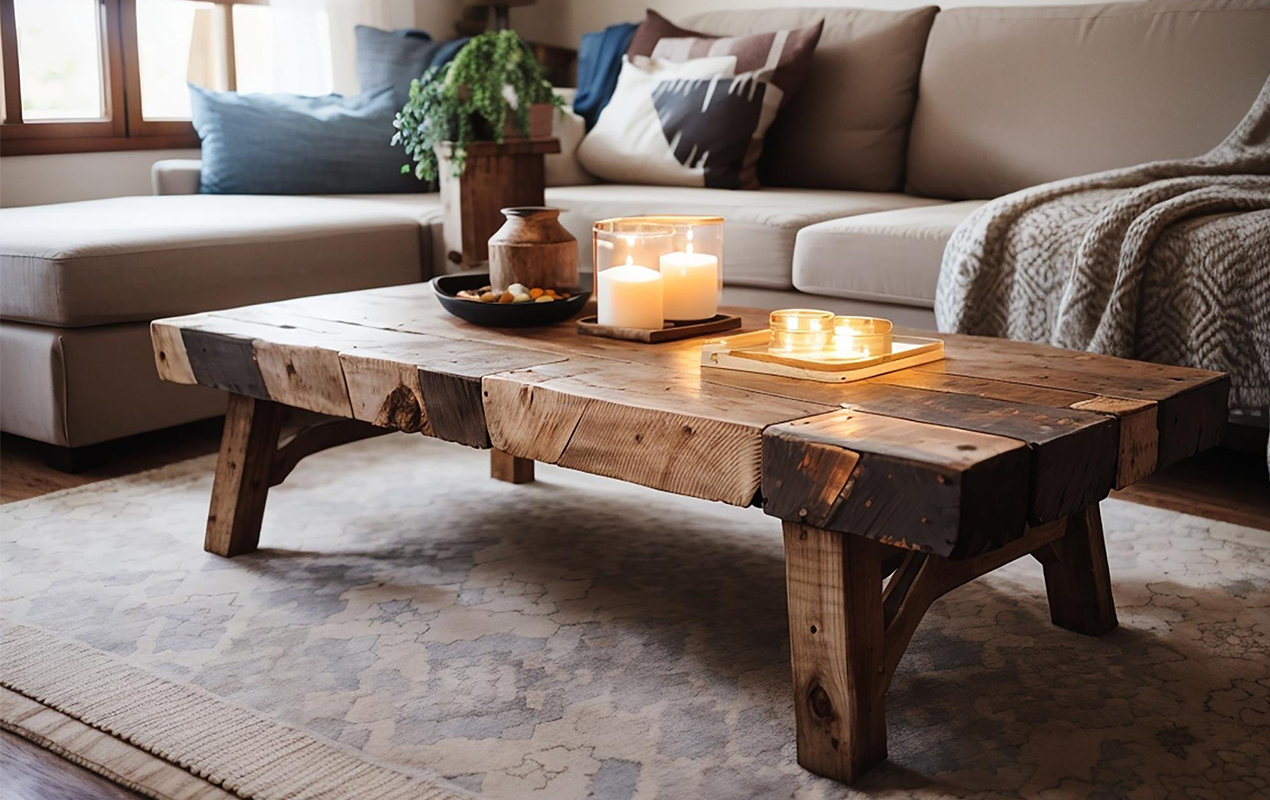
Photo by Dayalguru from Freepik
Insight – When choosing a table, consider the resale value. Hardwoods such as walnut and oak are often a better investment because they tend to retain their value.
Final Thoughts
Choosing the right wood type for your coffee table is an important decision that can significantly impact functionality and aesthetics. With a variety of popular wood options available, it’s essential to consider your needs and preferences. Your choice of wood can affect the durability, grain pattern, eco-friendliness, and affordability of your coffee table. Ultimately, selecting a wood that aligns with your lifestyle and design style is crucial, as your table will likely experience frequent use. By making a thought-through choice, you can ensure that your table will be cherished, combining practicality and visual appeal.

